Popular categories
Looking for a yarn?

100% Cotton
from 2.05 $ /50g
Order DROPS Safran from Wool Warehouse Direct Ltd

|
DROPS Safran uni colour 100% Cotton |
2.05 $ /50g |
Order |
Clicking the ORDER button will redirect you to Wool Warehouse Direct Ltd website
The yarn cost is calculated from the pattern’s smallest size and the yarn’s cheapest product type. Looking for an even better price? You might find it on the DROPS Deals!
Blue Summer
DROPS Pullover in Safran with short or long sleeves
Sizes: S - M - L - XL - XXL
Finished measurements:
Bust: 84-90-98-104-118 cm [33" - 35⅜" - 38⅝" - 41" - 46.5"]
Waist: 76-84-90-98-112 cm [29⅞" - 33" - 35⅜" - 38⅝" - 44"]
On account of the rib pattern the pullover fits snugly.
Materials: DROPS SAFRAN from Garnstudio
Short sleeve:
250-250-300-300-350 gr nr 50, ice blue.
Long sleeve:
300-300-350-350-400 gr nr 50, ice blue.
DROPS 2.5 mm [US 1] and 3.5 mm [US 4] circular needles and double-pointed needles, or sizes needed to obtain correct gauge.
-------------------------------------------------------
Alternative Yarn – See how to change yarns here
Yarn Groups A to F – Use the same pattern and change the yarn here
Yarn usage using an alternative yarn – Use our yarn converter here
-------------------------------------------------------

100% Cotton
from 2.05 $ /50g
Order DROPS Safran from Wool Warehouse Direct Ltd

|
DROPS Safran uni colour 100% Cotton 2.05 $ /50g Order |
Clicking the ORDER button will redirect you to Wool Warehouse Direct Ltd website
The yarn cost is calculated from the pattern’s smallest size and the yarn’s cheapest product type. Looking for an even better price? You might find it on the DROPS Deals!
- English (US/in)
- Česky - not translated
- Dansk
- Deutsch
- Eesti keel
- English (UK/cm)
- Español
- Français
- Íslenska
- Italiano
- Magyar
- Nederlands
- Norsk
- Polski
- Português
- Suomi
- Svenska
- English (UK/cm), Bulgaria
- English (UK/cm), Croatia
- English (UK/cm), Greece
- English (UK/cm), Latvia
- English (UK/cm), Lithuania
- English (UK/cm), Romania
- English (UK/cm), Slovenia
- Česky, Slovakia - not translated
Pattern instructions
Rib: * K 1, P 1 *, repeat from * - *.
Pattern: See chart. The pattern is seen from the right side.
Garter st, when knitting flat: Knit all sts, all rows.
Knitting tips (for neckband): All decs are made from right side. Dec inside 5 edge sts knit as follows from edge (seen from the right side): K 1 (edge st knit in garter st), K 1, P 1, K 1, P 1. Dec 1 st as follows:After 5 edge sts: Slip 1 st as if to knit, K 1, psso.
Before 5 edge sts: K 2 tog.
Body:
Cast on 176-192-208-224-256 sts on smaller circular needles; join and place a marker at the join. Knit 5 rows rib. Change to larger circular needles and Pattern 1 - see that the seed st columns in the pattern are directly over the purl sts in the rib. Put a marker at each side (in the center st of a K 3 rib) – there will be 87-95-103-111-127 sts between markers. When the piece measures 12 cm [4¾"] inc 1 st at each side of sts with markers every 5 cm [2"] a total of 4 times - knit the increased sts into the pattern as you go along = 192-208-224-240-272 sts.
Read the entire next section before continuing:
Pattern: When the piece measures 31-32-34-36-37 cm [12¼"-12½"-13⅜"-14¼"-14½"] knit Pattern 2 over the center 47 sts on the front (knit the remaining sts as before). After Pattern 2 knit Pattern 1 over all sts again.
Armhole: When the piece measures 33-34-35-36-37 cm [13"-13⅜"-13¾"-14¼"-14½"] bind off 7-9-9-11-11 sts at each side for armhole (that is, the st with the marker and 3-4-4-5-5 sts at each side st with marker). Knit each piece separately.
Front: = 89-95-103-109-125 sts. Continue the pattern and bind off for armhole at each side every other row: 3 sts 0-0-0-1-2 times, 2 sts 1-2-2-2-4 times and 1 st 2-3-3-3-4 times = 81-81-89-89-89 sts. When the piece measures 40-41-42-44-45 cm [15¾"-16⅛"-16½"-17¼"-17¾"] knit 5 rows rib over the center 29-29-37-37-37 sts - start with P 1 (knit the remaining sts in pattern as before). Then bind off the center 19-19-27-27-27 sts for the neck - bind off in pattern. Keep the 5 sts at each neck edge in rib, with the outermost st in garter st, to finished dimensions. Dec 1 st at each neck edge: every other row 4 times and then every 4 rows 4 times - see knitting tips = 23 sts remain on each shoulder. Bind off when the piece measures 52-54-56-58-60 cm [20½"-21¼"-22"-22¾"-23⅝"].
Back: = 89-95-103-109-125 sts. Bind off for armhole as on front = 81-81-89-89-89 sts. When the piece measures 49-51-53-55-57 cm knit 5 rows rib over the center 45-45-53-53-53 sts - start with P 1 (knit the remaining sts in pattern as before). Then bind off the center 35-35-43-43-43 sts for the neck - bind off in rib = 23 sts remain on shoulder. Knit the 5 sts at neck edge as on front and bind off when the piece measures 52-54-56-58-60 cm [20½"-21¼"-22"-22¾"-23⅝"].
Short sleeve: Cast on 60-64-68-72-80 sts on smaller double-pointed needles; join and place a marker at the join. Knit 5 rows rib. Change to larger double-pointed needles and knit Pattern 1 to finished measurements. When the piece measures 5 cm [2"] inc 1 st each side of marker a total of 8-8-10-10-8 times: Sizes S, M and XXL: alternately every 3rd and 4th row.
Sizes L and XL: alternately every other and every 3rd row
= 76-80-88-92-96 sts - knit the increased sts in the pattern as you go along. When the piece measures 15 cm [6"] bind off 3 sts each side of marker. Then bind off for sleeve cap every other row: 3 sts 1 time, 2 sts 3-3-4-4-4 times and 1 st 3-3-2-5-7 times, then bind off 2 sts at each side until the piece measures 22-23-23-25-26 cm [8¾"-9"-9"-9¾"-10¼"], then bind off 3 sts at each side 1 time. Bind off the remaining sts, the piece measures approx. 23-24-24-26-27 cm [9"-9½"-9½"-10¼"-10⅝"].
Long sleeve: Cast on 48-52-52-56-56 sts on smaller double-pointed needles; join and place a marker at the join. Knit 5 rows rib. Change to larger double-pointed needles and knit Pattern 1 to finished measurements. When the piece measures 10 cm [4"] inc 1 st each side of marker every 8-8-6-6-5 rows a total of 14-14-18-18-20 times = 76-80-88-92-96 sts - knit the increased sts in the pattern as you go along. When the piece measures 48-47-47-46-46 cm [19"-18½"-18½"-18"-18"] bind off 3 sts each side of marker. Then bind off for sleeve cap every other row: 3 sts 1 time, 2 sts 3-3-4-4-4 times and 1 st 3-3-2-5-7 times, then bind off 2 sts at each side until the piece measures 55-55-55-56-57 cm [21⅝"-21⅝"-21⅝"-22"-22½"], then bind off 3 sts at each side 1 time. Bind off the remaining sts, the piece measures approx. 56-56-56-57-58 cm [22"-22"-22"-22½"-22¾"].
Assembly: Sew shoulder seams. Sew in sleeves.
Diagram
All measurements in charts are in cm.

|
= knit (as seen from the right side) |

|
= purl (as seen from the right side) |

|
= yo |

|
= K 2 tog |

|
= slip 1 as if to knit, K 1, psso. |

|
= knit 3 sts as follows from right side without slipping off the left needle: P 3 tog, K 3 tog, P 3 tog, slip sts off left needle. |
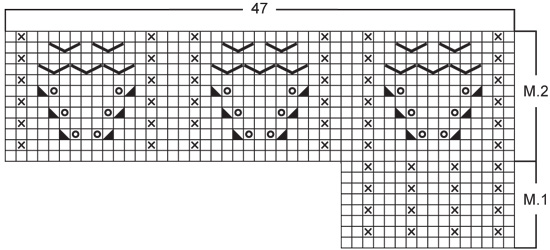
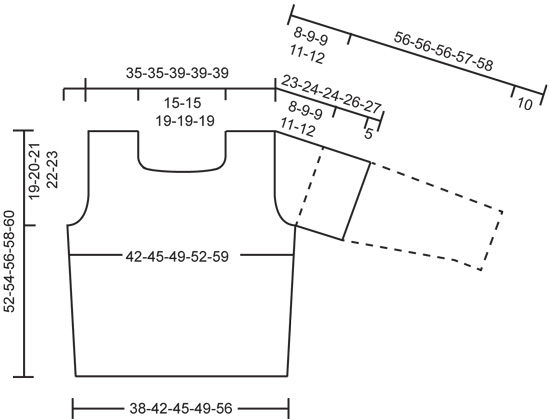
What can you do with our patterns? You can share DROPS patterns online, using the pattern original picture, materials, name and number. But you are NOT ALLOWED to reproduce the complete pattern digitally in any way. Yarn stores are welcome to use the DROPS pattern database to promote the sale of our assortment. You can print out our patterns, make as many copies as you’d like. The only thing we ask is that you don't make any changes / additions to the original printed document. And that the patterns according to the DROPS philosophy are given out to the consumers for free. Editorials that wish to publish our patterns in printed books or magazines can contact us for more information. The sale of garments based on DROPS patterns is permitted as long as they are sold as single items or per order. Further commercial use of the patterns is not permitted. It has to be clearly stated that the garment is made based on a design from DROPS DESIGN. The use of clothing labels of which DROPS DESIGN forms part is conditioned by the inclusion of the following text: “A DROPS DESIGN made by …..”. The use of DROPS photos for marketing purposes/sales is only permitted in connection with the use/sale of DROPS products. The photos may not be cut or edited and the logo should be clearly visible.
We reserve the right to withdraw the permission for use of our patterns at any time, notwithstanding the reason.
Each of our patterns has specific tutorial videos to help you.
These step-by-step tutorials might also help you:
Why is the knitting/crochet tension so important?
Knitting tension is what determines the final measurements of your work, and is usually measured per 10 x 10 cm. It is provided like so: number of stitches in width x number of rows in height - eg: 19 stitches x 26 rows = 10 x 10 cm.
The knitting tension is very individual; some people knit/crochet loosely while others work tightly. You adjust the knitting tension with the needle size, which is why the suggested needle size only serve as a guide! You need to adjust this (up or down) to ensure that YOUR knitting tension matches the knitting tension provided in the pattern. If you work with a different knitting tension than provided you will have a different yarn consumption, and your work will have different measurements than what the pattern suggests.
The knitting tension also determines which yarns can replace each other. As long as you achieve the same knitting tension you can replace one yarn with another.
See DROPS lesson: How to measure your tension/gauge
See DROPS video: How to make a gauge tension swatch
How do I know how many balls of yarn I need?
The required amount of yarn is provided in grams, eg: 450 g. To calculate how many balls you’ll need you first need to know how many grams are in 1 ball (25g, 50g or 100g). This information is available if you click on the individual yarn quality on our pages. Divide the amount required with the amount of each ball. For example, if each ball is 50g (the most common amount), the calculation will be as follows: 450 / 50 = 9 balls.
Can I use a different yarn than what the pattern suggests?
The important thing when changing from one yarn to another is that the knitting/crochet tension remains the same. This is so that the measurements of the finished piece will be the same as on the sketch provided. It is easier to achieve the same knitting tension using yarns from the same yarn group. It is also possible to work with multiple strands of a thinner yarn to achieve the knitting tension of a thicker one. Please try our yarn converter. We recommend you to always work a test swatch.
Please NOTE: when changing yarn the garment might have a different look and feel to the garment in the photo, due to individual properties and qualities of each yarn.
See DROPS lesson: Can I use a different yarn than the one mentioned in the pattern?
What are the yarn groups?
All our yarns are categorised into yarn groups (from A to F) according to thickness and knitting tension – group A contains the thinnest yarns and group F the thickest. This makes it easier for you to find alternative yarns to our patterns, should you wish to switch yarn. All yarns within the same group have a similar knitting tension and can easily replace each other. However, different yarn qualities have different structures and properties which will give the finished work a unique look and feel.
How do I use the yarn converter?
At the top of all our patterns you’ll find a link to our yarn converter, which is a helpful tool should you wish to use a different yarn than suggested. By filling in the yarn quality you wish to replace, the amount (in your size) and number of strands, the converter will present good alternative yarns with the same knitting tension. Additionally it will tell you how much you’ll require in the new qualities and whether you’ll need to work with multiple strands. Most skeins are 50g (some are 25g or 100g).
If the pattern is worked with multiple colours, every colour will have to be converted separately. Similarly, if the pattern is worked with several strands of different yarns (for example 1 strand Alpaca and 1 strand Kid-Silk) you will have to find alternatives for each, individually.
Why do you show discontinued yarns in the patterns?
Since different yarns have different qualities and textures we have chosen to keep the original yarn in our patterns. However, you can easily find options among our available qualities by using our yarn converter, or simply pick a yarn from the same yarn group.
It is possible that some retailers still have discontinued yarns in stock, or that someone has a few skeins at home that they would like to find patterns for.
The yarn converter will provide both alternative yarn as well as required amount in the new quality.
What size should I knit?
If you think it's hard to decide what size to make, it can be a good idea to measure a garment you own already and like the size of. Then you can pick the size by comparing those measures with the ones available in the pattern's size chart.
You'll find the size chart at the bottom of the pattern.
See DROPS lesson: How to read size chart
Why do I get the wrong knitting tension with the suggested needle size?
The needle size provided in the pattern serves only as a guide, the important thing is to follow the knitting tension. And since knitting tension is very individual, you will have to adjust the needle size to ensure that YOUR tension is the same as in the pattern – maybe you’ll have to adjust 1, or even 2 needle sizes, up or down to achieve the correct tension. For this, we recommend that you work test swatches.
Should you work with a different knitting tension than the one provided, the measurements of the finished garment might deviate from the measurement sketch.
See DROPS lesson: How to measure your tension/gauge
See DROPS video: How to make a gauge tension swatch
Why is the pattern worked top-down?
Working a garment top-down provides more flexibility and room for personal adjustment. For example it is easier to try the garment on while working, as well as making adjustments to length of yoke and shoulder caps.
The instructions are carefully explaining every step, in the correct order. Diagrams are adjusted to the knitting direction and are worked as usual.
How do I work according to a knitting diagram?
The diagram depicts all rows/rounds, and every stitch seen from the right side. It is read from bottom to top, from right to left. 1 square = 1 stitch.
When working back and forth, every other row is worked from the right side and every other row is worked from the wrong side. When working from the wrong side, the diagram will have to be worked reversed: from left to right, knit stitches are purled, purl stitches are knit etc.
When working in the round every round is worked from the right side and the diagram are worked from right to left on all rounds.
See DROPS lesson: How to read knitting diagrams
How do I work according to a crochet diagram?
The diagram depicts all rows/rounds, and every stitch seen from the right side. It is worked from bottom to top, from right to left.
When working back and forth every other row is worked from the right side: from right to left and every other row is worked from the wrong side: from left to right.
When working in the round, every row in the diagram are worked from the right side, from right to left.
When working a circular diagram you start in the middle and work your way outwards, counter clockwise, row by row.
The rows usually start with a given number of chain stitches (equivalent to the height of the following stitch), this will either be depicted in the diagram or explained in the pattern.
See DROPS lesson: How to read crochet diagrams
How do I work several diagrams simultaneously on the same row/round?
Instructions for working several diagrams after each other on the same row/round, will often be written like so: “work A.1, A.2, A.3 a total of 0-0-2-3-4 times". This means you work A.1 once, then A.2 is worked once, and A.3 is repeated (in width) the number of times provided for your size – in this case like so: S = 0 times, M = 0 times, L=2 times, XL= 3 times and XXL = 4 times.
The diagrams are worked as usual: begin with the first row in A.1, then work the first row in A.2 etc.
See DROPS lesson: How to read knitting diagrams
See DROPS lesson: How to read crochet diagrams
Why are the sleeves shorter in larger sizes?
The total width of the garment (from wrist-to-wrist) will be larger in the larger sizes, despite the actual sleeves being shorter. The larger sizes have longer sleeve caps and wider shoulders, so there will be a good fit in all sizes.
Where on the garment is the length measured?
The measurement sketch/schematic drawing provides information regarding the full length of the garment. If it’s a jumper or a jacket the length is measured from the highest point on the shoulder (usually closest to the neckline), and straight down to the bottom of the garment. It is NOT measured from the tip of shoulder. Similarly, the length of yoke is measured from the highest point on the shoulder and down to where yoke is split into body and sleeves.
See DROPS lesson: How to read a schematic drawing
What is a repeat?
Diagrams are often repeated on the round or in height. 1 repeat is the diagram the way it appears in the pattern. If it says to work 5 repeats of A.1 in the round, then you work A.1 a total of 5 times after/next to each other in the round. If it says to work 2 repeats of A.1 vertically/in height you work the entire diagram once, then begin again at the start and work the entire diagram one more time.
Why does the piece start with more chain stitches than it’s worked with?
Chain stitches are slightly narrower than other stitches and to avoid working the cast-on edge too tight, we simply chain more stitches to begin with. The stitch count will be adjusted on the following row to fit the pattern and measurement sketch.
Why increase before the rib edge when the piece is worked top-down?
The rib edge is more elastic and will contract slightly compared to, for example, stocking stitch. By increasing before the rib edge, you avoid a visible difference in width between the rib edge and the rest of the body.
Why increase in the cast-off edge?
It’s very easy to cast off too tightly, and by making yarn overs while casting off (and simultaneously casting these off) you avoid a too tight cast off edge.
See DROPS video: How to bind off with yarn overs (yo)
How do I increase/decrease on every 3rd and 4th row/round alternately?
To achieve an even increase (or decrease) you can increase on, for example: every 3rd and 4th row alternately, like so: work 2 rows and increase on the 3rd row, work 3 rows and increase on the 4th. Repeat this until the increase is complete.
See DROPS lesson: Increase or decrease 1 st on every 3rd and 4th row alternately
How can I work a jacket in the round instead of back and forth?
Should you prefer to work in the round instead of back and forth, you may of course adjust the pattern. You’ll need to add steeks mid-front (usually 5 stitches), and follow the instructions. When you would normally turn and work from the wrong side, simply work across the steek and continue in the round. At the end you’ll cut the piece open, pick up stitches to work bands, and cover the cut edges.
See DROPS video: How to knit steeks and cut open
Can I work a jumper back and forth instead of in the round?
Should you prefer to work back and forth instead of in the round, you may of course adjust the pattern so you work the pieces separately and then assemble them at the end. Divide the stitches for the body in 2, add 1 edge stitch in each side (for sewing) and work the front and back pieces separately.
See DROPS lesson: Can I adapt a pattern for circular needles into straight needles?
Why is the pattern slightly different than what I see in the photo?
Pattern repeats can vary slightly in the different sizes, in order to get the correct proportions. If you’re not working the exact same size as the garment in the photo, yours might deviate slightly. This has been carefully developed and adjusted so that the complete impression of the garment is the same in all sizes.
Make sure to follow instructions and diagrams for your size!
How do I make a women’s size garment into a men’s size one?
If you have found a pattern you like which is available in women’s size it’s not very difficult to convert it to men’s size. The biggest difference will be the length of sleeves and body. Start working on the women size that you think would fit across the chest. The additional length will be worked right before you cast off for the armhole/sleeve cap. If the pattern is worked top-down you can add the length right after the armhole or before the first decrease on sleeve.
Regarding additional yarn amount, this will depend on how much length you add, but it is better with a skein too many than too few.
How do I prevent a hairy garment from shedding?
All yarns will have excess fibres (from production) that might come off as lint or shedding. Brushed yarns (ie hairier yarns) have more of these loose, excess fibres, causing more shedding.
Shedding also depends on what is worn under or over the garment, and whether this pulls at the yarn fibres. It’s therefore not possible to guarantee that there will be no shedding
Below are some tips on how to get the best result when working with hairier yarns:
1. When the garment is finished (before you wash it) shake it vigorously so the looser hairs come off. NOTE: do NOT use a lint roller, brush or any method that pulls at the yarn.
2. Place the garment in a plastic bag and put it in your freezer - the temperature will cause the fibres to become less attached to each other, and excess fibres will come off easier.
3. Leave in the freezer for a few hours before taking it out and shaking it again.
4. Wash the garment according to the instructions on the yarn label.
Why does my garment pill?
Pilling is a natural process that happens to even the most exclusive of fibers. It's a natural sign of wear and tear that is hard to avoid, and that is most visible in high friction areas of your garment like a sweater's arms and cuffs.
You can make your garment look as new by removing the pilling, using a fabric comb or a pill/lint remover.
In the meantime, you can read the questions and answers that others have left to this pattern or join the DROPS Workshop on Facebook to get help from fellow knitters/crocheters!
You might also like...
Blue Summer |
|||||||||||||||||||
|
|
|||||||||||||||||||
DROPS Pullover in Safran with short or long sleeves
DROPS 77-19 |
|||||||||||||||||||
|
Gauge: 23 sts x 30 rows = 10 x 10 cm [4" x 4"] on larger needles in stockinette st. Rib: * K 1, P 1 *, repeat from * - *. Pattern: See chart. The pattern is seen from the right side. Garter st, when knitting flat: Knit all sts, all rows. Knitting tips (for neckband): All decs are made from right side. Dec inside 5 edge sts knit as follows from edge (seen from the right side): K 1 (edge st knit in garter st), K 1, P 1, K 1, P 1. Dec 1 st as follows:After 5 edge sts: Slip 1 st as if to knit, K 1, psso. Before 5 edge sts: K 2 tog. Body: Cast on 176-192-208-224-256 sts on smaller circular needles; join and place a marker at the join. Knit 5 rows rib. Change to larger circular needles and Pattern 1 - see that the seed st columns in the pattern are directly over the purl sts in the rib. Put a marker at each side (in the center st of a K 3 rib) – there will be 87-95-103-111-127 sts between markers. When the piece measures 12 cm [4¾"] inc 1 st at each side of sts with markers every 5 cm [2"] a total of 4 times - knit the increased sts into the pattern as you go along = 192-208-224-240-272 sts. Read the entire next section before continuing: Pattern: When the piece measures 31-32-34-36-37 cm [12¼"-12½"-13⅜"-14¼"-14½"] knit Pattern 2 over the center 47 sts on the front (knit the remaining sts as before). After Pattern 2 knit Pattern 1 over all sts again. Armhole: When the piece measures 33-34-35-36-37 cm [13"-13⅜"-13¾"-14¼"-14½"] bind off 7-9-9-11-11 sts at each side for armhole (that is, the st with the marker and 3-4-4-5-5 sts at each side st with marker). Knit each piece separately. Front: = 89-95-103-109-125 sts. Continue the pattern and bind off for armhole at each side every other row: 3 sts 0-0-0-1-2 times, 2 sts 1-2-2-2-4 times and 1 st 2-3-3-3-4 times = 81-81-89-89-89 sts. When the piece measures 40-41-42-44-45 cm [15¾"-16⅛"-16½"-17¼"-17¾"] knit 5 rows rib over the center 29-29-37-37-37 sts - start with P 1 (knit the remaining sts in pattern as before). Then bind off the center 19-19-27-27-27 sts for the neck - bind off in pattern. Keep the 5 sts at each neck edge in rib, with the outermost st in garter st, to finished dimensions. Dec 1 st at each neck edge: every other row 4 times and then every 4 rows 4 times - see knitting tips = 23 sts remain on each shoulder. Bind off when the piece measures 52-54-56-58-60 cm [20½"-21¼"-22"-22¾"-23⅝"]. Back: = 89-95-103-109-125 sts. Bind off for armhole as on front = 81-81-89-89-89 sts. When the piece measures 49-51-53-55-57 cm knit 5 rows rib over the center 45-45-53-53-53 sts - start with P 1 (knit the remaining sts in pattern as before). Then bind off the center 35-35-43-43-43 sts for the neck - bind off in rib = 23 sts remain on shoulder. Knit the 5 sts at neck edge as on front and bind off when the piece measures 52-54-56-58-60 cm [20½"-21¼"-22"-22¾"-23⅝"]. Short sleeve: Cast on 60-64-68-72-80 sts on smaller double-pointed needles; join and place a marker at the join. Knit 5 rows rib. Change to larger double-pointed needles and knit Pattern 1 to finished measurements. When the piece measures 5 cm [2"] inc 1 st each side of marker a total of 8-8-10-10-8 times: Sizes S, M and XXL: alternately every 3rd and 4th row. Sizes L and XL: alternately every other and every 3rd row = 76-80-88-92-96 sts - knit the increased sts in the pattern as you go along. When the piece measures 15 cm [6"] bind off 3 sts each side of marker. Then bind off for sleeve cap every other row: 3 sts 1 time, 2 sts 3-3-4-4-4 times and 1 st 3-3-2-5-7 times, then bind off 2 sts at each side until the piece measures 22-23-23-25-26 cm [8¾"-9"-9"-9¾"-10¼"], then bind off 3 sts at each side 1 time. Bind off the remaining sts, the piece measures approx. 23-24-24-26-27 cm [9"-9½"-9½"-10¼"-10⅝"]. Long sleeve: Cast on 48-52-52-56-56 sts on smaller double-pointed needles; join and place a marker at the join. Knit 5 rows rib. Change to larger double-pointed needles and knit Pattern 1 to finished measurements. When the piece measures 10 cm [4"] inc 1 st each side of marker every 8-8-6-6-5 rows a total of 14-14-18-18-20 times = 76-80-88-92-96 sts - knit the increased sts in the pattern as you go along. When the piece measures 48-47-47-46-46 cm [19"-18½"-18½"-18"-18"] bind off 3 sts each side of marker. Then bind off for sleeve cap every other row: 3 sts 1 time, 2 sts 3-3-4-4-4 times and 1 st 3-3-2-5-7 times, then bind off 2 sts at each side until the piece measures 55-55-55-56-57 cm [21⅝"-21⅝"-21⅝"-22"-22½"], then bind off 3 sts at each side 1 time. Bind off the remaining sts, the piece measures approx. 56-56-56-57-58 cm [22"-22"-22"-22½"-22¾"]. Assembly: Sew shoulder seams. Sew in sleeves. |
|||||||||||||||||||
Diagram explanations |
|||||||||||||||||||
|
|||||||||||||||||||

|
|||||||||||||||||||

|
|||||||||||||||||||
|
Have you made this or any other of our designs? Tag your pictures in social media with #dropsdesign so we can see them! Do you need help with this pattern?You'll find tutorial videos, a Comments/Questions area and more by visiting the pattern on garnstudio.com. © 1982-2024 DROPS Design A/S. We reserve all rights. This document, including all its sub-sections, has copyrights. Read more about what you can do with our patterns at the bottom of each pattern on our site. |
|||||||||||||||||||
With over 40 years in knitting and crochet design, DROPS Design offers one of the most extensive collections of free patterns on the internet - translated to 17 languages. As of today we count 304 catalogs and 11422 patterns - 11417 of which are translated into English (US/in).
We work hard to bring you the best knitting and crochet have to offer, inspiration and advice as well as great quality yarns at incredible prices! Would you like to use our patterns for other than personal use? You can read what you are allowed to do in the Copyright text at the bottom of all our patterns. Happy crafting!











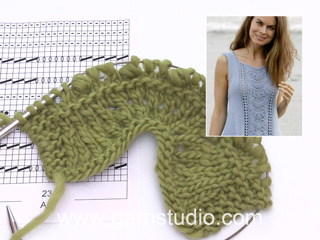
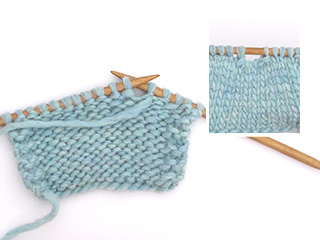









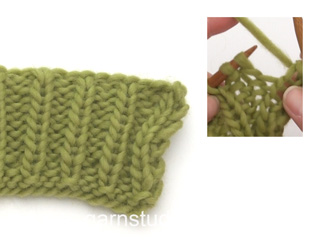



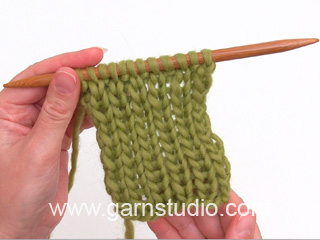






















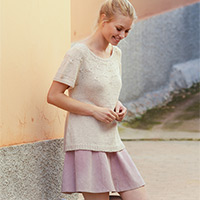
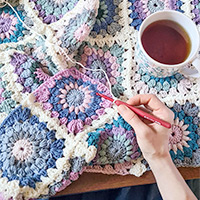
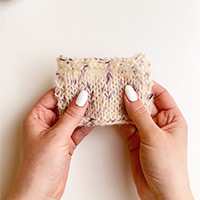
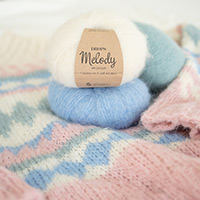
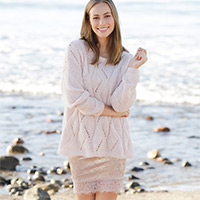

Comments / Questions (62)
Je monte 192 mailles, alors comment se fait-il qu\\\'il y a 95 mailles entre les marqueurs et non 96. J\\\'ai mis un marqueur dans un 3 m. end et 95 mailles plus loin j\\\'en ai mis un autre. J\\\'ai un coté avec 95 m. et un autre avec 97 m. Il y a surement quelque chose qui m\\\'échappe.
19.06.2018 - 21:08DROPS Design answered:
Bonjour Mme Daoust, les marqueurs doivent être dans une maille, pas entre les mailles: dans la maille au milieu des 3 m end soit 1 m avec un marqueur, 95 m, 1 m avec un marqueur et 95 m = 192 m. Bon tricot!
20.06.2018 - 08:02Ich verstehe folgendes nicht:\r\nDie Perlmustergestrickten-M sollten das Muster von der li-M nach oben folgen. 1 Markierungsfaden auf jeder Seite anbringen (= in der Mitte von 3 re-M), zwischen den Markierungsfäden sind 87-95-103-111-127 M. Was bedeutet: das Muster von der li-M nach oben folgen?\Und wenn ich 224 M aufnehme, und dann die Markierungsfäden anlege, müssten das doch 112 Maschen zwischen den Markierungsfäden ergeben und nicht 111 ?\Danke für Ihre Hilfe Annette
08.04.2018 - 06:13DROPS Design answered:
Liebe Frau Poggel, die Masche in M.1 die Sie (1 M re, 1 M li in der Höhe) stricken sollen über die linken Maschen vom Rippenmuster gestrickt sein. Dh Bündchen haben Sie so gestrickt: (1 M re, 1 M li), M1 wird so gestrkt: (1 M re, 1 M li (= über die li M vom Bündchen), 3 M re, 1 M li (= über die li M vom Bündchen) usw. Die Markierungen sind jeweils in einer M: 1 Markierung, 103 M, 1 Markierung, 103 M = 208 M, nach den Zunahmen haben Sie: 1 Markierung, 111 M, 1 Markierung, 111 M = 224 M. Viel Spaß beim stricken!
09.04.2018 - 10:11Per una taglia S sono abbastanza i ferri circolari da 60 cm, o sono meglio da 80? Grazie
29.03.2018 - 09:29DROPS Design answered:
Buongiorno Elisa, contando che si parte da una circonferenza di 76 cm, meglio partire con il cavo da 60 cm, altrimenti sugli 80 sarebbero tirati. Nel caso può cambiare il cavo in corso d'opera se dovesse servire. Buon lavoro!
29.03.2018 - 09:37Bonjour, J'aimerais tricoter ce pull en version manches longues (taille XXL) en cadeau et avec le fil Baby Alpaca Silk ou Baby Merino, Pourriez-vous, m'aider, SVP, lequel de ces 2 fils serait mieux et quelles quantité je dois acheter? Merci beaucoup.
05.06.2017 - 16:24DROPS Design answered:
Bonjour, les deux laines sont tres belles, pour la taille XXL il vous faut 8 pelotes dans les deux cas. L'effet avec la laine Baby Alpaca Silk est plus brillant. Quant a Baby Merino, elle est tres douce, elastique, avec les mailles bien definies. On peut la laver en machine, elle convient ainsi à un usage quotidien, ce qui est particulierement important en ete. Partagez vos resultats sur notre facebook. Bon travail!
05.06.2017 - 18:44Ærmekuppel Spørgsmålet er til ærmekuplen. Der står "videre lukkes der 2 m til arbejdet måler 22-23-23-25-26 cm". Betyder det, at der lukkes 2 m af på hver pind, indtil arbejdet måler det antal cm, der passer til størrelsen?
11.05.2017 - 09:29DROPS Design answered:
Hej Lene, ja det stemmer - i starten af hver pind. God fornøjelse! :)
11.05.2017 - 11:38Kan I, der har lavet denne opskrift ikke prøve at svare igen, så det kan forstås??? Ellers må jeg trevle det hele op - øv! Mon ikke der er andre end mig, der bliver forvirrede. Det er mønster 2 på drops 77-19 " strik de 3 m sammen således fra retsiden uden at lade dem falde af venstre p: 3vr sm, 3r sm, 3vr sm, slip m af venstre p." - og efter sammenstrikningen er der stadig lige mange masker på tegningen
06.05.2017 - 00:19DROPS Design answered:
Hej Lene, jo men da du strikker de samme 3 masker sammen 3 gange i træk (uden at strikke noget andet imellem), så har du nu 3 nye masker på din højre pind. Forstår du hvad jeg mener?
08.05.2017 - 15:23Hei. Strikker topp, kort erme. Men hva menes med videre felles det til emi opp? Skal d felles på hver side av pinnene, eller midt på pinnen, eller kun på den ene siden?
12.07.2015 - 16:15DROPS Design answered:
Hej Lisbeth helen, Ja du feller til ermtopp i hver side af arbejdet. God fornøjelse!
30.07.2015 - 14:45Strikker jumper og er kommet til mønsteret,men forstår ikke det øverste. Det står:"Strikk de 3 m slik fra retten uten å la dem falle av venstre p.:3vr sm,3r sm,3vr sm.Slipp m av venstre pinne.Vil ha ordentelig forklaring på dette,Det skal vel bli 11 m igjen , Skal det være vrange masker eller vridde masker.?
11.08.2014 - 14:45DROPS Design answered:
Hei Wenche. Du strikker de 3 masker vr sammen, r sammen og vrang sammen (ikke vrid) uden du tager dem af pinden. Dvs, du strikker de 3 m 3 gange sammen fór du tager dem af venstre pind.
11.08.2014 - 16:04Mon ikke der er andre end mig, der bliver forvirrede. Det er mønster 2 på drops 77-19 " strik de 3 m sammen således fra retsiden uden at lade dem falde af venstre p: 3vr sm, 3r sm, 3vr sm, slip m af venstre p." - og efter sammenstrikningen er der stadig lige mange masker på tegningen
10.06.2014 - 13:34DROPS Design answered:
Hej Gerda. Ja, det er sandt. Men du stikker pinden ind i de 3 masker og strikker först vrang, saa ret, saa vrang sammen. De 3 gange slipper du ikke de 3 m fra venstre pind, saa du faar faktisk 3 nye masker paa höjre pind, naar du slipper den af venstre. Svaert at forklare, men jeg haaber du forstaar :-)
11.06.2014 - 19:28The pattern refers to "Pattern 1" and "Pattern 2. There are references to garter and seed stitches but no clear explanation of Pattern 1. Pattern 2 is clearly shown at the end. I love the look of the sweater! Please help!
12.02.2014 - 00:33DROPS Design answered:
Pattern 1 is the section in the chart below pattern 2.
12.02.2014 - 01:26